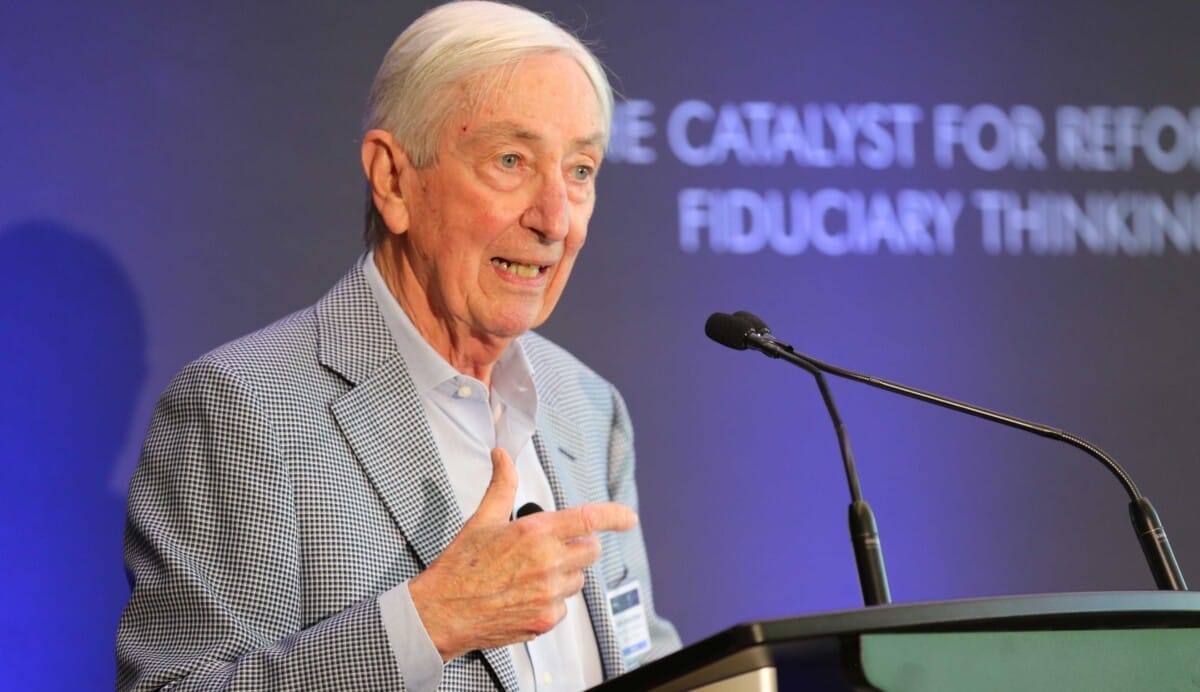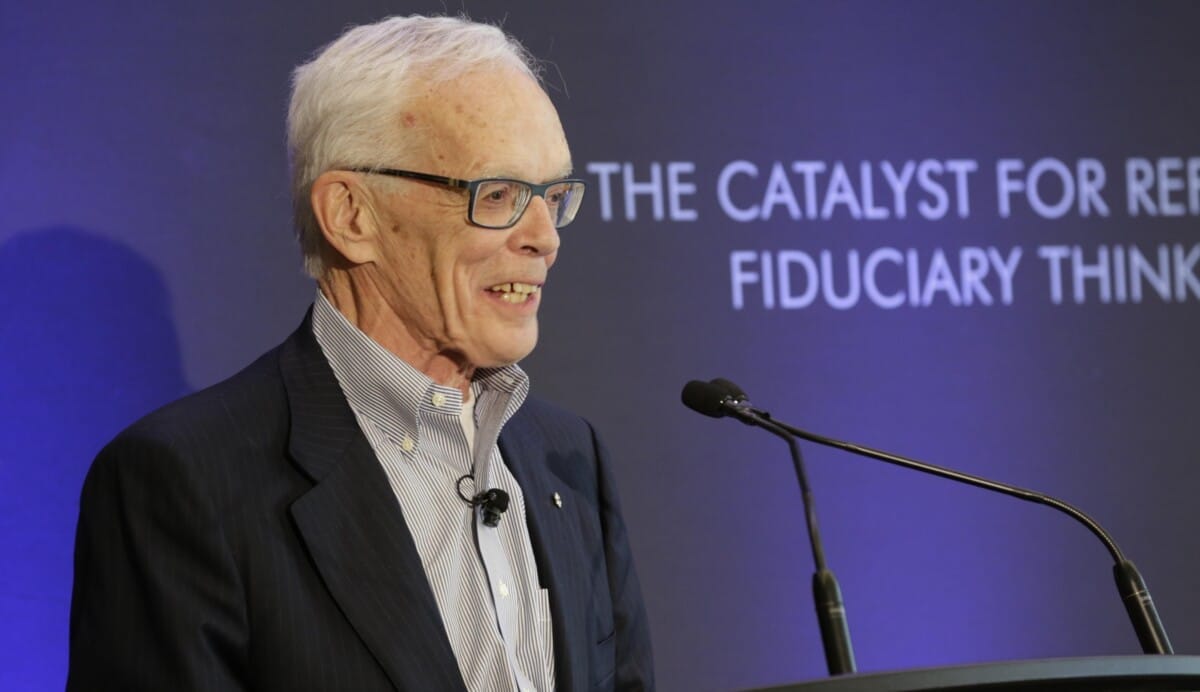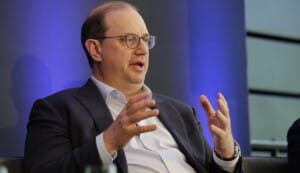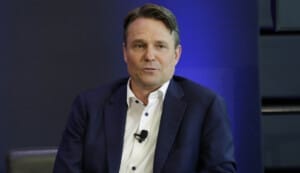A founding principle of the Canadian pension system is under attack. The Fiduciary Investors Symposium in Toronto heard from four individuals who have been instrumental in making the system what it is today, and that the sound principles that made the system great need to be defended.
Two high profile pioneers of the $4.1 trillion Canadian pension industry have warned the founding principles that have made Canadian funds exemplars around the world are under attack.
Independent board member and former Canadian Pension Plan Investment Board chief executive officer Mark Wiseman told the Top1000funds.com Fiduciary Investors Symposium in Toronto that principles set out in the early days of the development of the system are “being assailed”.
And University of Toronto Rotman School of Management executive in residence and pension system luminary Keith Ambachtsheer told the symposium that these attacks undermine the legitimacy of a system and the funds within it that are designed to provide pensions to millions of people.
“The Canadian model is under threat today,” Wiseman said. “When you see trillions of dollars in assets, when you see a government that is running deficits, when you see economic malaise – and we’ve seen this in other jurisdictions –this is the time when pension assets get raided. And I’ll use that term, because that is the risk that I think the Canadian model faces today.”
Wiseman warned that the issue is “much more acute than people think”.
“It will come under a different guise, it’ll be said, ‘you should invest more in Canada’, ‘you should invest more in infrastructure’, ‘we should let people have access to their capital earlier’, or whatever excuse may be the fact of the day.
“And I truly believe that if Canadians, whose money it is, it’s not the government’s money, whether you’re in the Ontario Teachers plan, or you’re in the CPP, or you’re in any other pension system, it’s your savings as a beneficiary.
“If the government went into your bank account and took that money, you’d be up in arms. And Canadians have to understand that [if] the government tries to direct their capital away from being invested for the purpose of maximising risk-adjusted returns, the whole system is at risk. And I think we’re really at risk today.”
Ambachtsheer said raiding the retirement savings of workers undermines the legitimacy of the entire system, and “really what you’re talking about is that the legitimacy of this model is under attack”.
“A recent example would be this move to move more of the assets into Canadian investments that we just saw in the last few months,” he said. “To me, that’s sort of an attack on legitimacy. The counter to that is…I have a sister [and] brother-in-law who are teachers. They are up in arms about this movement to touch their money. The counterpoint to the threat is that as long as people believe that that money is being managed in a legitimate way, then I think that’s the best hope we have.”
Wiseman and Ambachtsheer were on a panel alongside inaugural Ontario Teachers’ Pension Plan CEO Claude and CPP Investments current CEO John Graham, speaking about the origins and much-revered tenets of the Canadian system that are admired by pension funds around the world. It was the first time that all four “legends” have been on the same stage and it set the scene for the conference program to come.
Historical perspective
Legitimacy is one of the foundational elements of the Canadian system and was first canvassed in a seminal 1976 book, The Unseen Revolution: How pension fund socialism came to America by the management consultant and author Peter Drucker. Ambachtsheer said the publication of the book really marked the birth of the modern Canadian pension industry.
“It’s got a specific start date and has evolved over time from there, involving a number of events and a number of people, with some of these people becoming increasingly famous with the passage of time,” Ambachtsheer said.
Drucker’s book set out the issues likely to arise as the then-very young Baby Boomer generation began accumulating enormous wealth. One of the book’s core contentions was that Karl Marx was wrong: workers would not seize the means of production through violent revolution, but instead through their pension funds.

“Given that insight, he quite correctly posed the next question, which was, okay, what does that imply for how we should think about organising a retirement income management system,” Ambachtsheer said.
Ambachtsheer summarised the key messages in Drucker’s book as: the new institutions we must create to administer and invest pension monies must have adequate management; be rendered legitimate; they must be autonomous institutions; be accountable to their constituencies; and free from any conflicts of interest.
“The only footnote I would make there is that the Drucker definition of ‘adequate’ in terms of ‘adequate management’ is a little different than just ‘good enough’,” Ambachtsheer said. “Drucker’s standard of ‘adequate’ was very high. And that was actually one of the key messages I took away from the book, which was this notion that pension organisations deserve as good management quality as any other organisation.”
Another big step occurred in around 1987 when then-Treasurer of Ontario Robert Nixon “decided that public sector pension fund management in Ontario was not being done very well and that there had to be a better way”.
Ambachtsheer was involved in the production of a 400-page report into what that better way was.
“When you condense the messages in that report down to, again, one paragraph, guess what? You end up with the original Drucker message,” Ambachtsheer said. “Nixon [and] the president of the Ontario Teachers Federation Margaret Wilson also took the report seriously. The two of them got together and said, we should make this happen, and that led to the passage of the Pension Management Act 1990. It basically created the legal framework for this new organisation.
“And what happens next [is] you’ve got a board, you’ve got a plan, you’ve got a legal structure; now you need a CEO. And that’s the next part of the story because that CEO is sitting right over here.”
More than investments
Ontario Teachers’ Pension Plan inaugural chief executive Claude Lamoureux told the symposium that it’s fair to say that in the mid-70s, and despite Drucker’s astute prescription for an optimal pension plan system, the administration and governance of at least some pension plans was far from ‘adequate’ in any sense of the word.
Lamoureux says that OTPP, for example, had accounts that hadn’t been reconciled for a decade, and its telephone systems didn’t work.
“When you did a survey of the employees, you could see that people didn’t know where they were going,” he says.
“They knew that the quality was lousy. They didn’t want any of their relatives to be involved with the teachers’ pension plan. And there were a lot of mistakes being made.

“Eventually, we had to recalculate everybody’s pension.
“Why? Because when amendments were made to the pension plan, there was no communication between the people making the law and the manager. And so you do that for a number of years, and where do you end up? A half billion dollar kind of error. We overpaid to the tune of $360 million. And we also underpaid to the tune of $140 million.”
Lamoureux says that what has grown out of the Canadian experience is the clear understanding that an effective pension organisation must be “more than just an investment operation”.
“It’s [also] it’s having the right controls, having the right IT team, having the right people having the right auditor,” he said.
“And when you do that, eventually, you can demonstrate that you can manage money and you can do as well as anybody.
“When I look at Ontario Teachers, it’s more than just you need the right structure. You need a board that really understands what’s going on. And you know, I always try to emphasise with the teachers and the government, that we need quality on the board, we need to keep them.”
Origin story
Lamoureux said it is critical that pension funds hire the best people they can, pay them well enough to retain them, and empower them to be creative and entrepreneurial.
Wiseman told the symposium that “it really was Ontario Teachers, and Claude in particular, that developed the Canadian model”, and that Wiseman himself was hired by OTPP in 2001 to “be part of a team that was going to go the next step in terms of disintermediating…the private equity asset managers by doing more co-investments, becoming more of a direct investor, and by innovating”.
“Ontario Teachers had the right governance in place and Claude’s absolutely right, and the quote that was shared earlier by Keith is absolutely right, that the governance and management really mattered,” Wiseman said.

“We had a professional board that Claude had put together. We had a CIO that understood multiple asset classes. And we were an incredibly entrepreneurial organisation.”
Wiseman said the team at OTPP was able to demonstrate that “with the right governance, with the right controls in place, and checks and balances, that indeed, a pension fund could also be an asset manager of the first degree”.
“And, if you had those preconditions in place, you could be an asset manager that not only could capture the substantial fees that were otherwise outsourced, but you could actually outperform because of the comparative advantages you had, whether it be your scale, the long-term nature of your capital, and your ability to innovate.”
While this was all going on at Ontario Teachers, almost literally down the street another pension management organisation was developing quickly, the Canada Pension Plan Investment Board (CPPIB). It was looking to OTPP for clues and cues on how to create just as excellent an organisational structure and performance for its beneficiaries.
CPPIB was formed in 1999 and “really from 1999 until 2005 was a very conservative, traditional organisation because you have to start somewhere”, Wiseman said.
“After the first five years of CPPIB they looked north up Yonge Street to Finch [Avenue] and came to the conclusion that they wanted to replicate the Ontario Teachers model.”
CPPIB hired Wiseman “and others, at some level to replicate and maybe a little bit, to try and improve on and innovate on the model that had been developed at Ontario teachers”, he said.
“And so CPPIB over the next several years…we kind of, I think, in my view helped take that teachers model to the to the next level as we continued to grow and innovate,” Wiseman said.
Staying ‘modernisable’
CPP Investments current president and chief executive John Graham told the symposium that when he was first approached by a headhunter in 2007 and offered a job at the pension management organisation he quickly realised there was “something there”.
“There’s this organisation that has an unbelievable governance model,” he said.
“It has resources, and it has the ambition to be great…not on a Canadian scale, but it has the ambition to be great on a global scale. I think I got to take this opportunity.

“When I started, we would define the organisation as very much in a capability building mode. We were building out our capabilities across asset classes, and across geographies. And as I say, Mark was really instrumental in pushing the organisation into new geographies, pushing the organisation into new asset classes.”
Graham says the build-out period lasted about a decade, but it quickly proved its worth in driving investment returns.
“The next phase of evolution is we’ve built out these capabilities, and it’s really bringing it all together to ensure that we’re driving investment excellence for the organisation itself, ensuring that we’re allocating capital to the best opportunities globally to the best asset classes globally.
“And, ultimately ensuring that we’re we are delivering on the mandate of the of the organisation. And it’s not easy to go from capability building to now really focusing in on the entire system, really focusing on the entire organisation, the entire fund, and making sure that people, process, the technology is all in place to ensure that we can deliver returns for generations to come.”
From an idea in a book published in 1976 to a $4 trillion-plus industry today, the Canadian pension fund system is now entering a new phase. CPPIB itself is creating a structure for when it becomes a C$1 trillion fund (and it’s forecast to grow to C$3.6 trillion by 2050). And it will be the same principles set out by Peter Drucker, built on by Lamoureux, Ambachtsheer, Wiseman and many others that will continue to guide it.
“We will never be a modern organisation,” Graham says.
“We just need to make sure we’re a modernisable organisation, we just need to make sure we’re an organisation that, again, has the right people, the right culture, the right technology, the right process, the right governance, that will continuously change as the market changes around us, as the capital markets change around us, as the private markets change around us, that we just will evolve with it.
“And we don’t essentially solidify as an organisation, we ensure that we continue to be modernisable as an organisation, and that’s probably as much as the mindset and the culture is anything else.”



